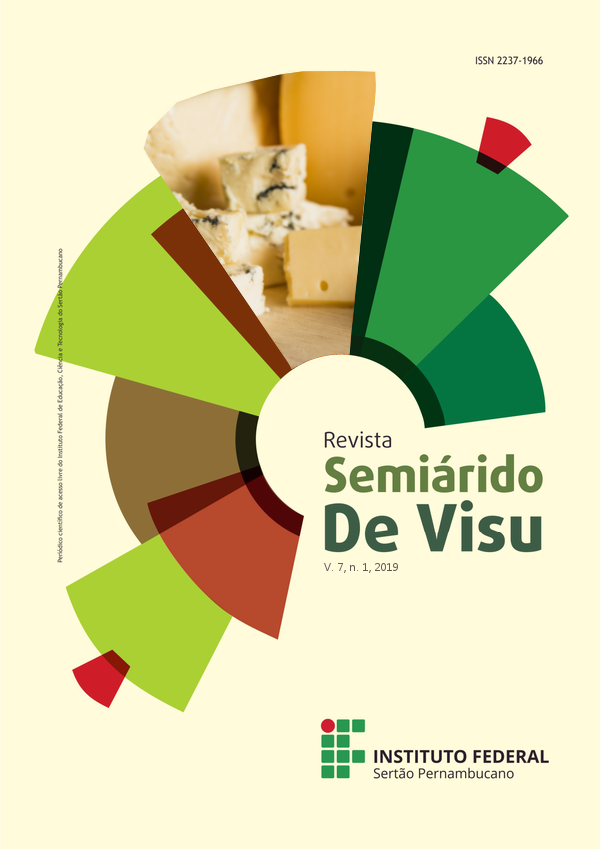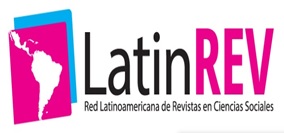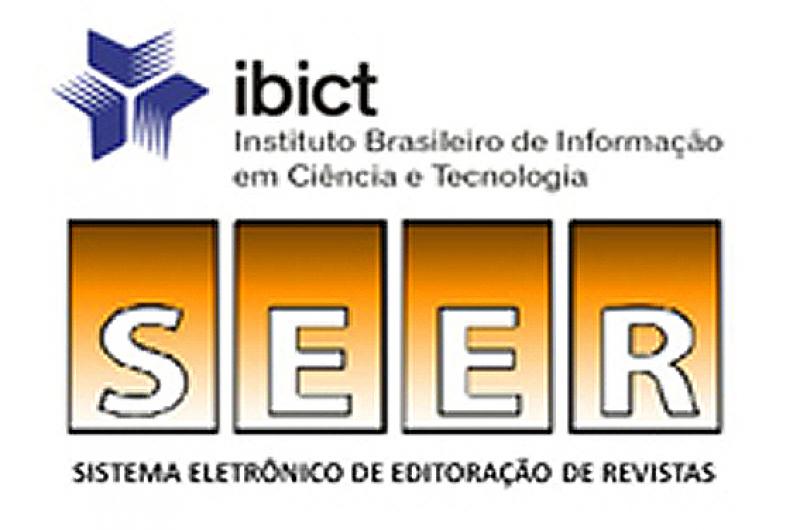TECHNOLOGICAL AND NUTRITIVE CHARACTERIZATION OF “QUEIJO DE PORCO” SAUSAGE TRADITIONALLY PRODUCED AND COMMERCIALIZED IN SOUTHERN BRAZIL
Visualizações: 338DOI:
https://doi.org/10.31416/rsdv.v7i1.103Palavras-chave:
Meat byproducts, jelly products, fatty acid profile, minerals, nutritional value, textureResumo
The use of byproducts and retails from boning in meat products development is of great importance to the meat industry, as it adds value to a plentiful raw material and provide an increase in the protein content of formulated products. In Brazil, the manufacturing of traditional products based on byproducts like “Queijo de Porco” is not standardized being non-existent legislation to determine the technical characteristics and the nutritional quality of such products. Therefore, the aim of this study was to determine the technological and nutritional composition of the “Queijo de Porco” produced in southern Brazil, analyzing the chemical composition, water activity, pH, chloride and residual nitrite content, total and nitrous heme pigments, mineral and collagen content, fatty acids composition and the texture profile analysis. Traditional products from four different regions of Rio Grande do Sul state were used. There were significant differences (P < 0.05) between the brands studied, except for the protein, ash and chlorides contents. The analyzed products show a similar fatty acid content to that reported in the literature for Brazilian pork products. The results obtained indicate that “Queijo de Porco” shows high protein and iron content, with good polyunsaturated/saturated fatty acids ratio and low atherogenic and thrombogenic indexes, which makes it a more healthful product than some pork products produced in Brazil.Referências
OCKERMAN HW, HANSEN CL. Animal by-product processing & utilization. Boca Raton: CRC Press, 2000; pp. 523.
COLOMBIA. Ministério de La Salud. Reglamento parcial eltitulo V de la ley 09 de 1979, en cuanto a producción, procesamiento, transporte y expendio de los productos cárnicos procesados. Decreto, nº 2162, Agosto 1, 1983, Republica de Colombia, 1983.
PEARSON AM, GILLETT TA. Processed meats. 3 ed. New York: Chapman & Hall, 1999; pp. 664.
URUGUAY. 1egulamento Bromatologico Nacional. Decreto, nº 315/994, Julio 5, 1994, Republica Oriental del Uruguay, 1994.
MEXICO. Calidad para queso de puerco. Normas Mexicanas, NMX-F-141, 1969, Dirección General de Normas., 1969.
COSTA RICA. Norma Oficial de Productos Cárnicos: Clasificación y características. Decreto Ejecutivo, nº 18341, Agosto 8, 1988, Imprenta Nacional, Gaceta nº 149, RTCR 79, 1988.
EQUADOR. Instituto Ecuatoriano de Normalización, INEN. Carne y productos cárnicos. Queso de cerdo. Requisitos. Norma Técnica Ecuatoriana, NTE -INEN 1338, 2012, INEN, 2012.
AOAC. Official methods of analysis of AOAC International. 19th ed. Gaithersburg, MD: Association of Official Analytical Chemists, 2012; pp. 1298.
RAMOS EM, GOMIDE LAM. Avaliação da Qualidade de Carnes: Fundamentos e Metodologias. 2a ed. Viçosa: Editora UFV, 2017; pp. 473.
HARTMAN L, LAGO RC. Rapid preparation of fatty acid methyl esters from lipids. Lab Pract. 1973;22(6):475-6.
VICENTE-NETO J, BRESSAN MC, FARIA PB, JO EV, CARDOSO M, GLORIA MB et al. Fatty acid profiles in meat from Caiman yacare (Caiman crocodilus yacare) raised in the wild or in captivity. Meat Sci. 2010;85(4):752-8. doi:10.1016/j.meatsci.2010.03.036
ULBRICHT TLV, SOUTHGATE DAT. Coronary heart disease: seven dietary factors. The Lanc. 1991;338(8773):985-92. doi:10.1016/0140-6736(91)91846-M
BRASIL. Ministério da Agricultura, Pecuária e Abastecimento (MAPA), Secretaria de Defesa Agropecuária (SDA). Aprova os Regulamentos Técnicos de Identidade e Qualidade de Almôndega, de Apresuntado, de Fiambre, de Hambúrguer, de Kibe, de Presunto Cozido e de Presunto. Instrução Normativa, 20, 31 de julho de 2000, Diário Oficial [da] República Federativa do Brasil, 2000.
BRASIL. Ministério da Agricultura, Pecuária e do Abastecimento (MAPA) Secretaria de Defesa Agropecuária (SDA). Aprova o Regulamento da Inspeção Industrial e Sanitária de Produtos de Origem Animal (RIISPOA). Decreto, nº 30.691, 29 de março de1952 e alterado pela ultima vez pelo Decreto no. 2.244, de 4 de junho de 1997, Diário Oficial [da] República Federativa do Brasil, 1997.
OCKERMAN HW. Sausage and Processed Meat Formulations. 1st ed. New York: Van Nostrand Reinhold, 1989; pp.
BAYLEY AJ, LIGHT ND. Connective tissue in meat and meat products. England Elsevier Science Publishers, 1989; pp. 355.
PEGG RB, SHAHIDI FS. Nitrite curing of meat: the N-nitrosamine problem and nitrite alternatives. 1 ed. Trumbull, USA: Wiley-Blackwell, 2000; pp. 268.
HONIKEL KO. The use and control of nitrate and nitrite for the processing of meat products. Meat Sci. 2008;78(1–2):68-76. doi:10.1016/j.meatsci.2007.05.030
BRASIL. Ministério da Agricultura, Pecuária e Abastecimento (MAPA) Secretaria de Defesa Agropecuária (SDA). Aprova o Regulamento Técnico de Atribuição de Aditivos, e seus Limites das seguintes Categorias de Alimentos 8: Carne e Produtos Cárneos. Instrução Normativa no. 51, 29 dezembro de 2006, Diário Oficial [da] República Federativa do Brasil, 2006.
WHO. Reducing salt intake in populations. Report of a WHO Forum and Technical Meeting. Paris: World Health Organization, 2006; pp.
GOMIDE LAM, RAMOS EM, FONTES PR. Ciência e Qualidade da Carne: Fundamentos. 1 ed. Viçosa: Editora UFV, 2013; pp. 197.
USDA. USDA National Nutrient Database for Standard Reference: USDA/ARS Nutrient Data Laboratory, Release 19; 2007 [cited 2007 May, 05, 2014]. Available from: http://www.ars.usda.gov/ba/bhnrc/ndl.
JIMÉNEZ-COLMENERO F, CARBALLO J, COFRADES S. Healthier meat and meat products: their role as functional foods. Meat Sci. 2001;59:5-13. doi:10.1016/S0309-1740(01)00053-5
IOM/FNB. Dietary Reference Intakes for Vitamin A, Vitamin K, Arsenic, Boron, Chromium, Copper, Iodine, Iron, Manganese, Molybdenum, Nickel, Silicon, Vanadium, and Zinc : a Report of the Panel on Micronutrients external link disclaimer. Board. IoMFaN, editor. Washington, DC: National Academy Press, 2001; pp.
IOM/FNB. Dietary Reference Intakes for Calcium and Vitamin D. Board. IoMFaN, editor. Washington, DC: National Academy Press, 2011; pp.
MASSINGUE AA, TORRES FILHO RDA, FONTES PR, RAMOS ADLS, FONTES EAF, OLALQUIAGA PEREZ JR et al. Effect of mechanically deboned poultry meat content on technological properties and sensory characteristics of lamb and mutton sausages. Asian-Australas J Anim Sci. 2018;31(4):576-84. doi:10.5713/ajas.17.0471
KOOLMEES PA, BIJKER PG, VAN LOGTESTIJN JG, TUINSTRA-MELGERS J. Histometrical and chemical analysis of mechanically deboned pork, poultry and veal. J Anim Sci. 1986;63:1830-7.
BAGGIO SR, BRAGAGNOLON. Lipid fraction quality evaluation of Brazilian meat-based products. J Braz Chem Soc. 2008;19:463-70.
WILLIAMSON CS, FOSTER RK, STANNER SA, BUTTRISS JL. Red meat in the diet. Nutr Bull. 2005;30(4):323-55. doi:10.1111/j.1467-3010.2005.00525.x
WHO. Diet nutrition and the prevention of chronic diseases: report of a Joint WHO/FAO Expert Consultation2002; pp. 149.
WOOD JD, RICHARDSON RI, NUTE GR, FISHER AV, CAMPO MM, KASAPIDOU Eet al. Effects of fatty acids on meat quality: a review. Meat Sci. 2004;66(1):21-32. doi:10.1016/S0309-1740(03)00022-6
ROMERO MC, ROMERO AM, DOVAL MM, JUDIS MA. Nutritional value and fatty acid composition of some traditional Argentinean meat sausages. Food Sci Tech. 2013;33:161-6.















